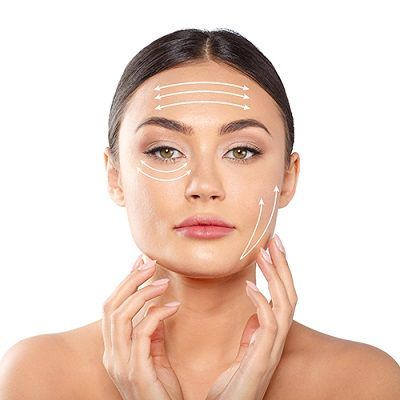Facelift surgery, known in medical terms as rhytidectomy, is a popular cosmetic procedure aimed at reducing visible signs of aging. This transformative surgery tightens and lifts the skin on the face and neck, creating a more youthful appearance. In Muscat, where aesthetics play a significant role in personal care, understanding the science behind Facelift Muscat is crucial for those considering this procedure. This article delves into the mechanics of facelift surgery, offering insights into how the process works and what makes it effective.

Understanding Facelift Surgery
A facelift in Muscat is not just about enhancing appearance; it's a detailed surgical process designed to address specific signs of aging. The procedure primarily targets sagging skin, deep creases, and loss of facial volume. By tightening the underlying muscles and redistributing skin, a facelift can significantly rejuvenate the face.
Anatomy of the Face and Aging
To comprehend how a facelift works, it's essential to understand the facial anatomy and the effects of aging. As we age, our skin loses elasticity and firmness due to decreased collagen production. The facial muscles and fat pads also shift downward, contributing to sagging and deepening of facial lines.
Types of Facelift Procedures
In Muscat, various types of facelift procedures are available to cater to different needs and preferences:
- Traditional Facelift: Involves incisions along the hairline and around the ears to lift and reposition the skin and underlying tissues.
- Mini Facelift: Targets less extensive areas, requiring shorter incisions and offering a less invasive option with shorter recovery time.
- Mid-Facelift: Focuses on the middle part of the face, including the cheeks and nasolabial folds, to restore volume and contour.
The Facelift Procedure
Preoperative Preparation
Before the facelift surgery in Muscat, patients undergo a comprehensive consultation and preoperative assessment. This step ensures that candidates are well-informed about the procedure and have realistic expectations. Preparation may involve:
- Medical Evaluation: Assessing overall health to ensure suitability for surgery.
- Discussion of Goals: Clarifying aesthetic goals and discussing the expected outcomes with the surgeon.
- Preoperative Instructions: Following specific guidelines to prepare for surgery and recovery.
Surgical Techniques
During the facelift surgery, the surgeon employs various techniques based on the chosen procedure. The general steps include:
- Anesthesia: Administering general or local anesthesia to ensure comfort throughout the procedure.
- Incisions: Making precise incisions to access the underlying tissues. In a traditional facelift, these are typically located around the hairline and ears.
- Repositioning Tissues: Lifting and tightening the facial muscles and skin. Excess skin is removed, and the remaining skin is repositioned for a smoother appearance.
- Closure: Suturing the incisions carefully to minimize scarring and promote healing.
Recovery and Aftercare
Postoperative care is crucial for achieving optimal results from facelift surgery. In Muscat, patients receive personalized aftercare instructions, including:
- Managing Swelling and Bruising: Utilizing cold compresses and prescribed medications to reduce discomfort.
- Follow-Up Appointments: Regular visits to monitor healing and address any concerns.
- Activity Restrictions: Avoiding strenuous activities and following guidelines to ensure proper healing.
Results and Expectations
Immediate Results
The initial results of a facelift surgery in Muscat are noticeable almost immediately, with a more youthful and lifted appearance. However, it is essential to manage expectations as:
- Swelling and Bruising: These are common and may obscure the final results temporarily.
- Healing Process: Complete results become visible after several weeks to months, once the swelling subsides and the skin settles into its new position.
Long-Term Outcomes
Facelift surgery can offer long-lasting results, but it is not a permanent solution to aging. Maintaining a healthy lifestyle and following good skincare practices can prolong the effects of the surgery.
Advances in Facelift Technology
Innovative Techniques
Recent advancements in facelift technology have led to more refined and less invasive procedures. Innovations include:
- Endoscopic Facelifts: Using small cameras and instruments to perform the surgery through tiny incisions, reducing recovery time and scarring.
- Ultrasound-Assisted Facelifts: Employing ultrasound technology to enhance precision in tightening the skin and underlying tissues.
Customized Approaches
In Muscat, personalized approaches to facelift surgery are becoming more common. Surgeons tailor procedures to individual facial structures and aesthetic goals, ensuring a more natural and satisfying outcome.
Conclusion
Understanding the science behind facelift surgery provides valuable insight into how this procedure can effectively address signs of aging. In Muscat, where aesthetic enhancement is highly valued, knowing the details of how facelift surgery works can help individuals make informed decisions about their cosmetic journey. From preoperative preparation to the latest advancements, a facelift offers a promising solution for those seeking a refreshed and youthful appearance.
